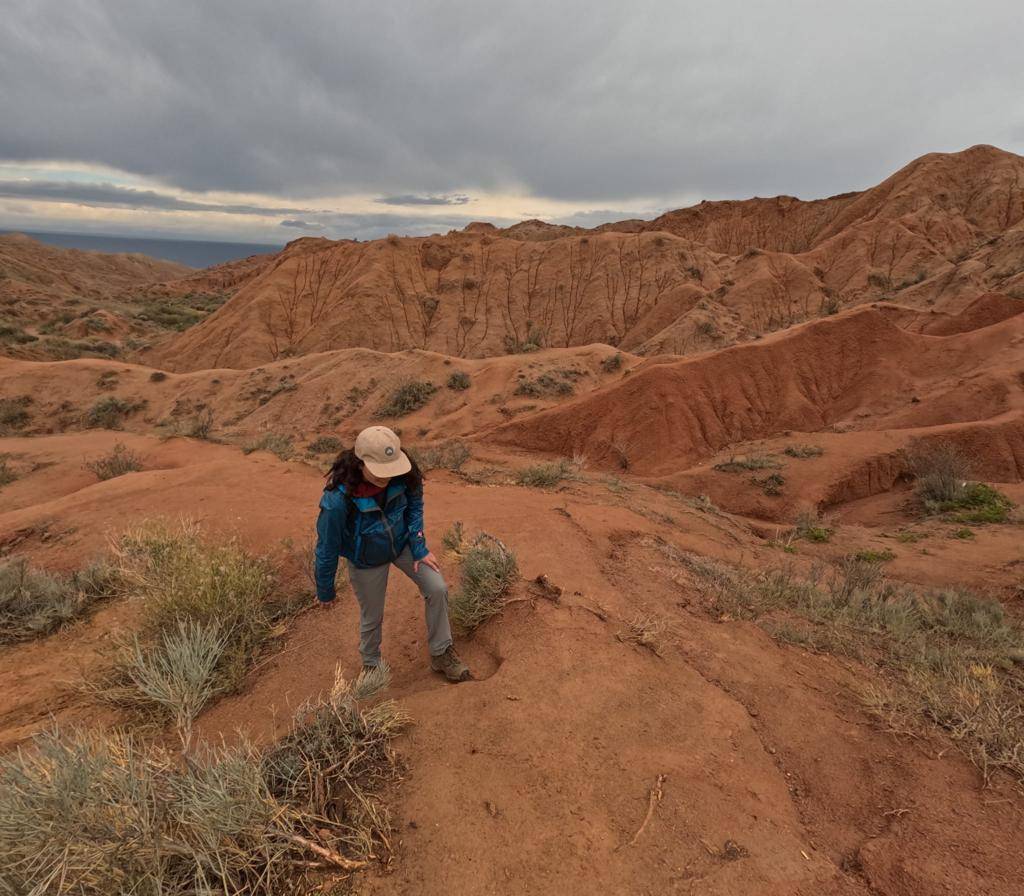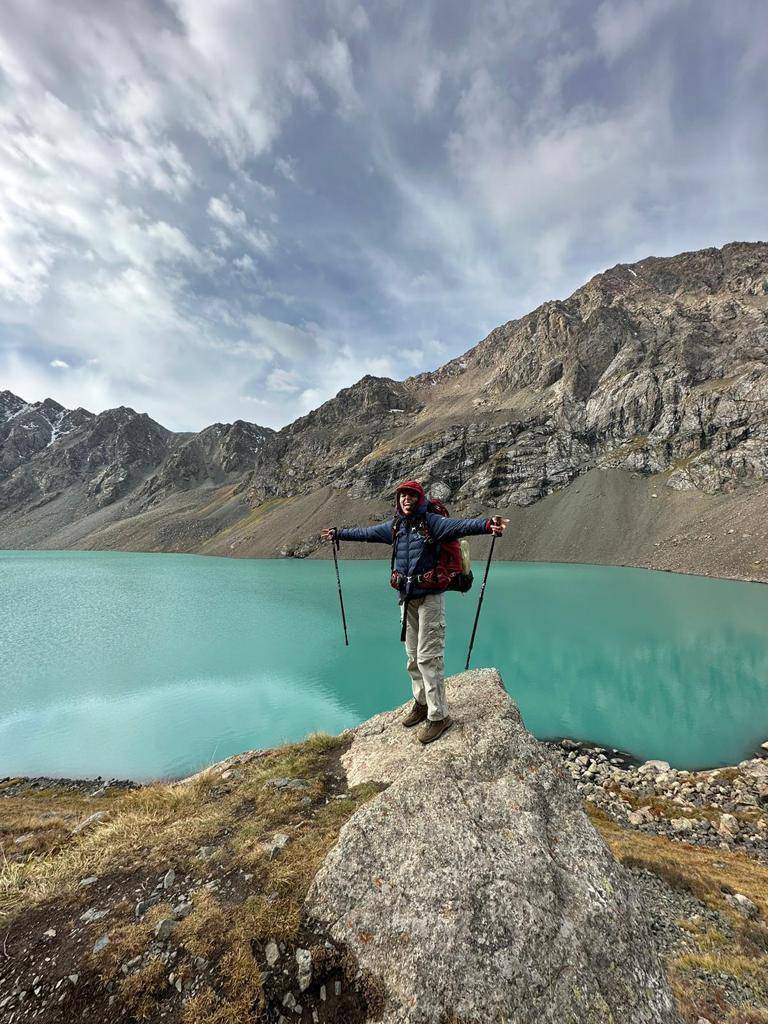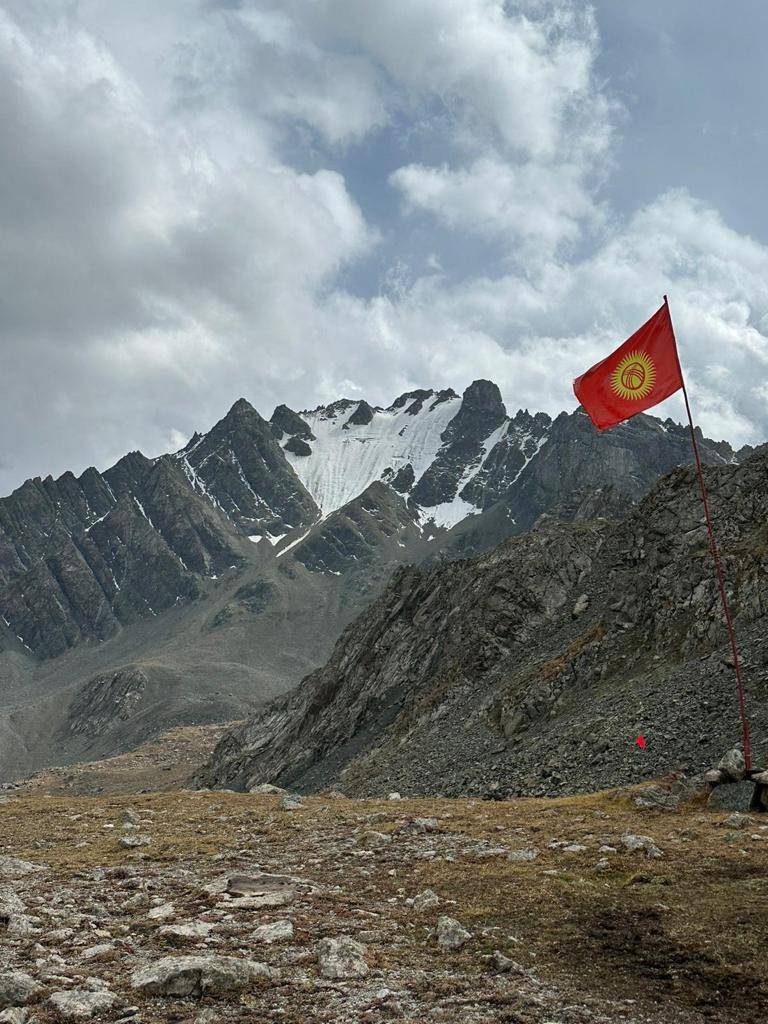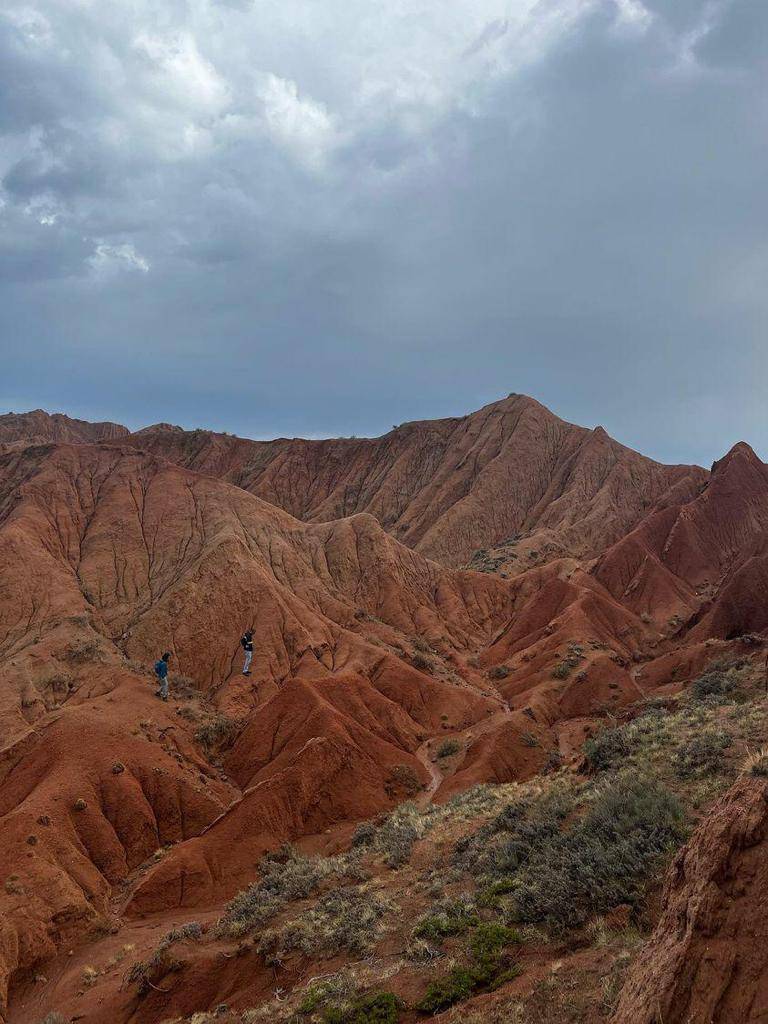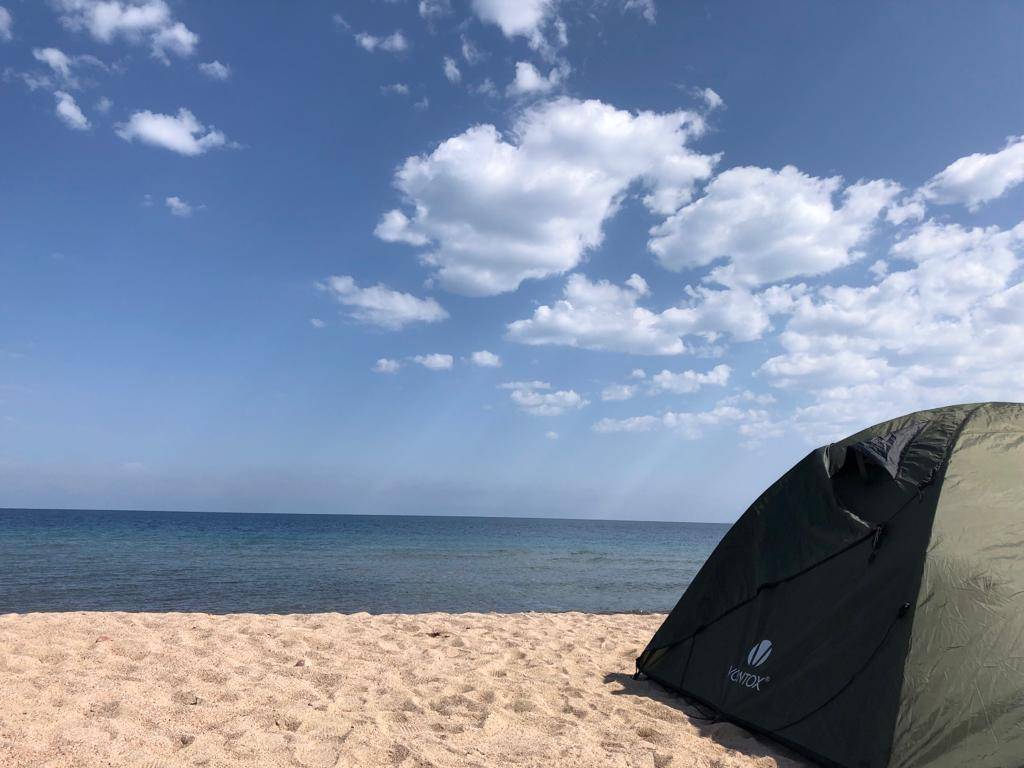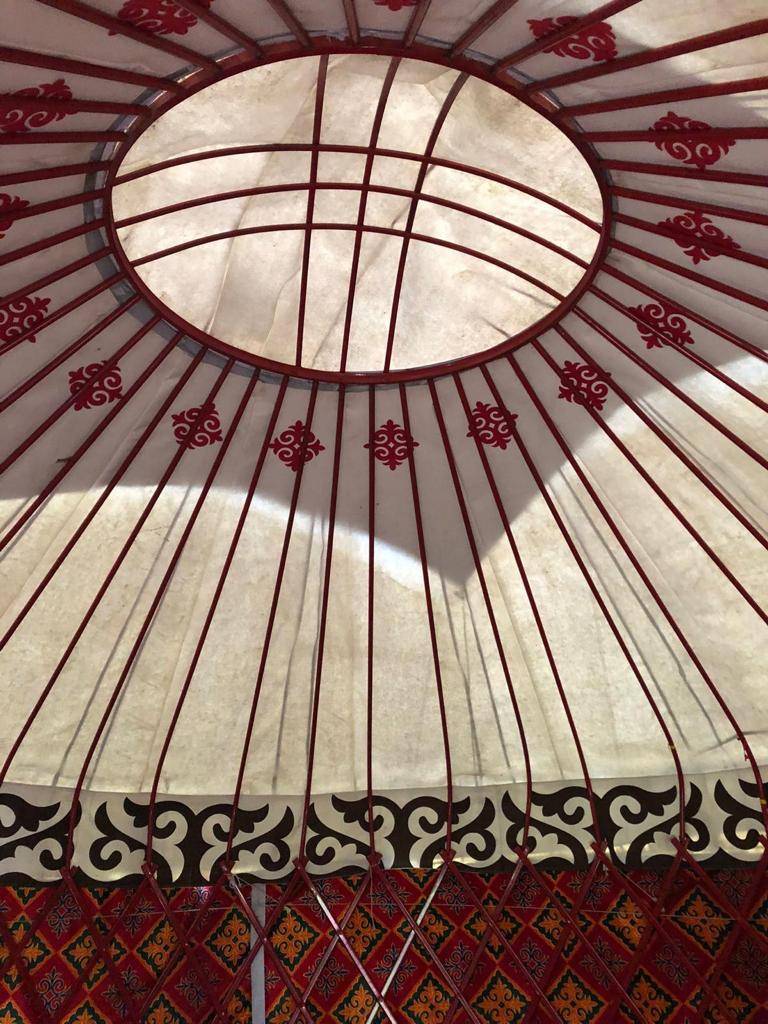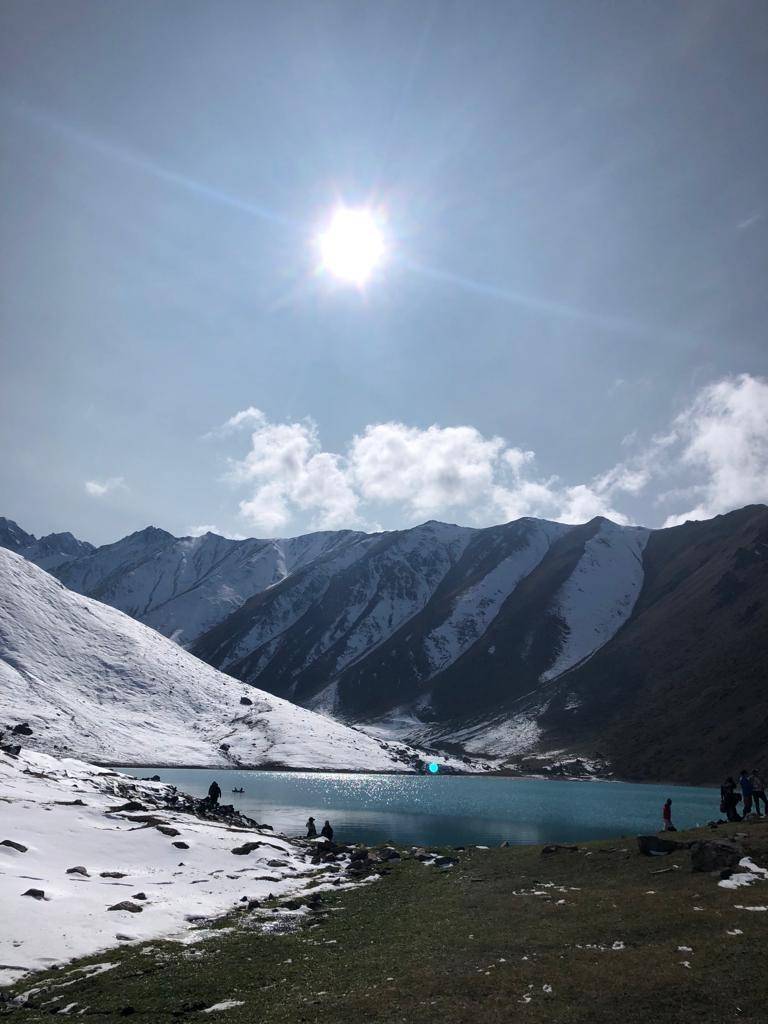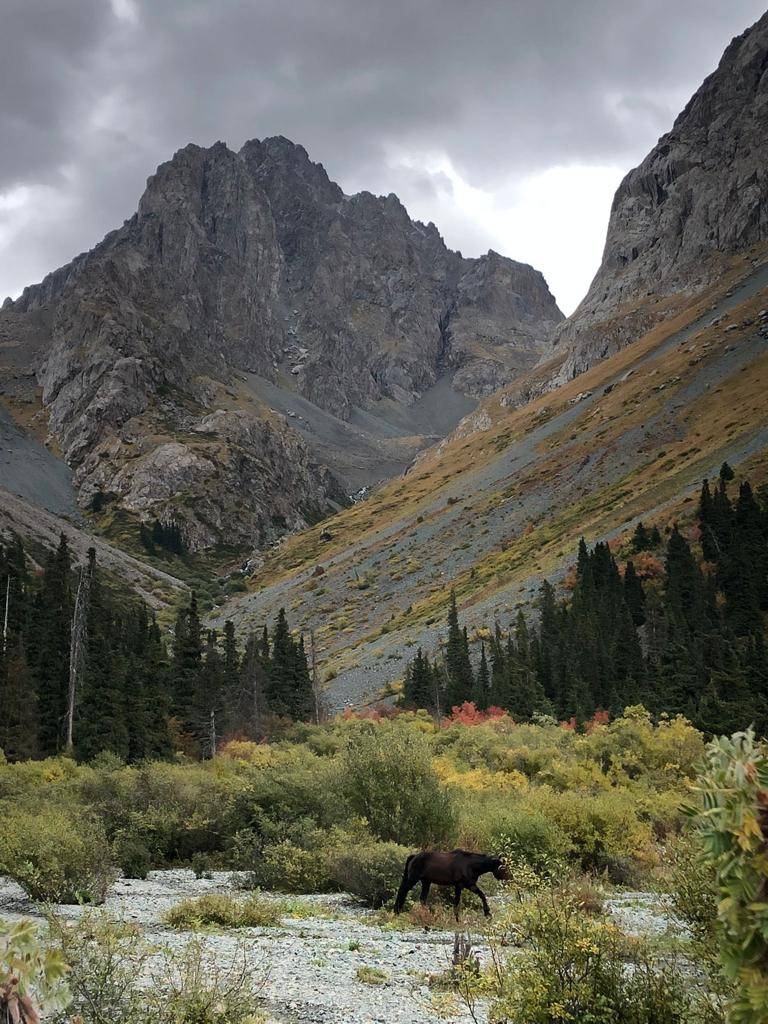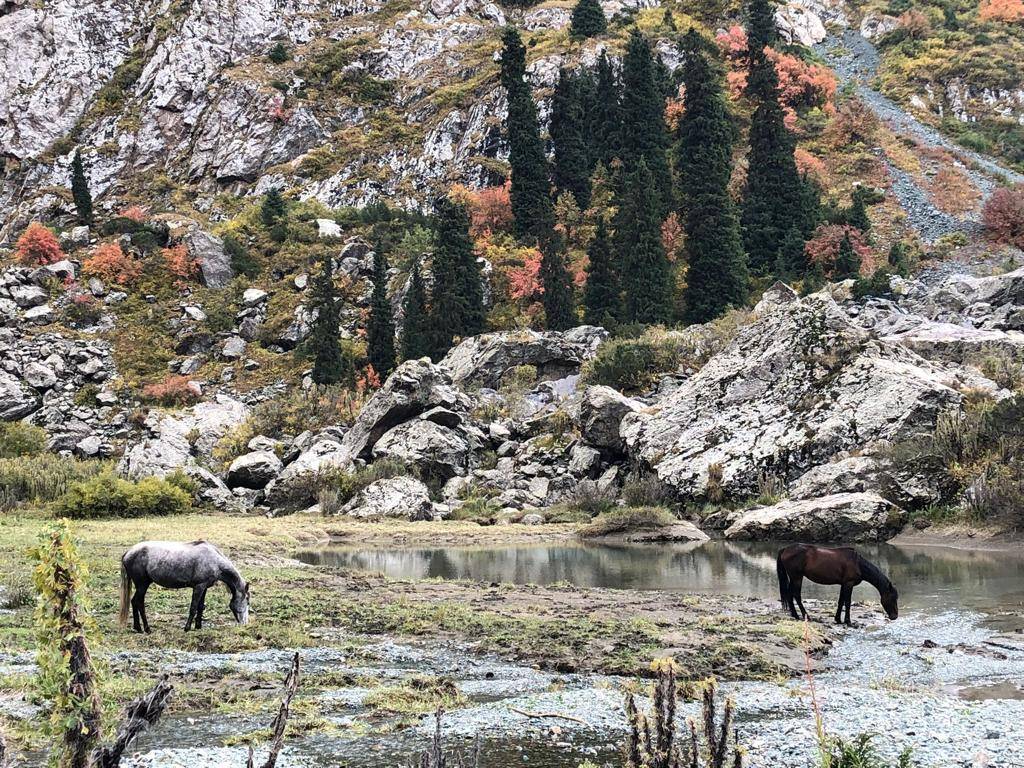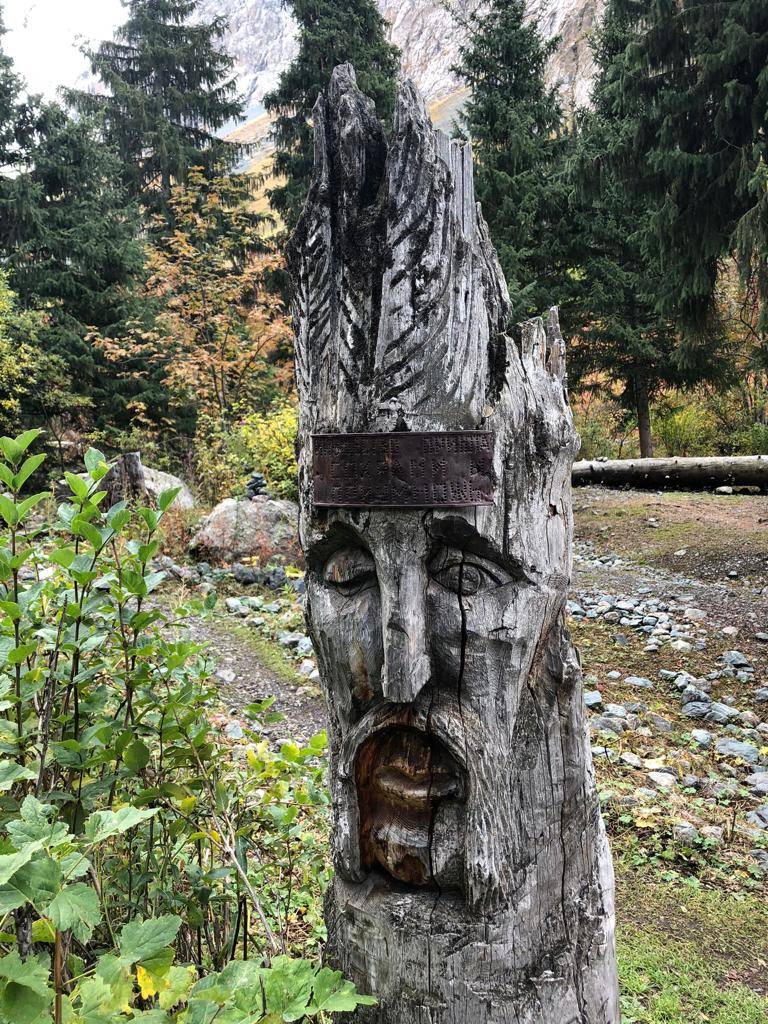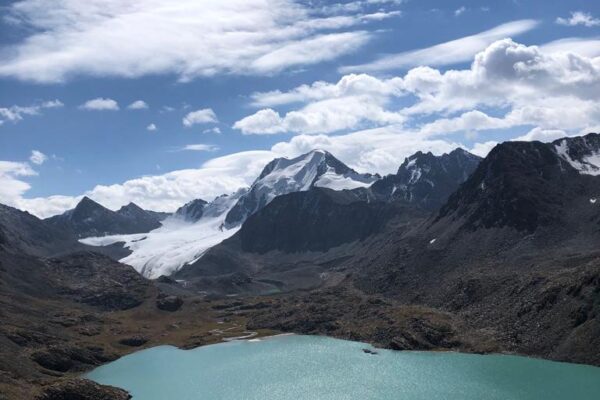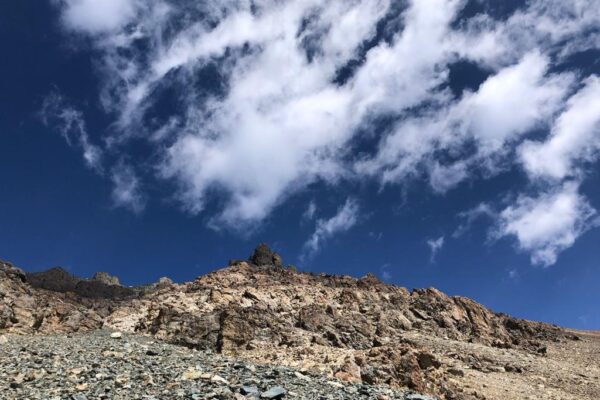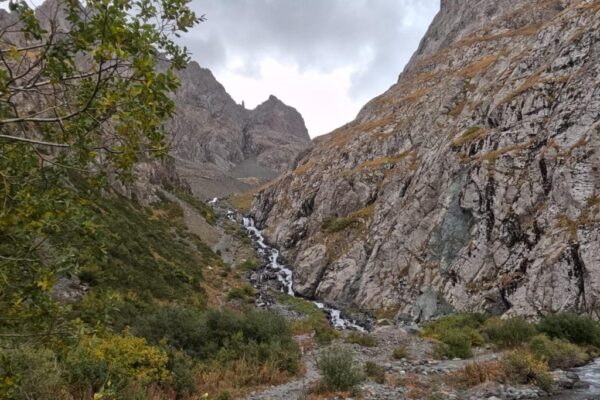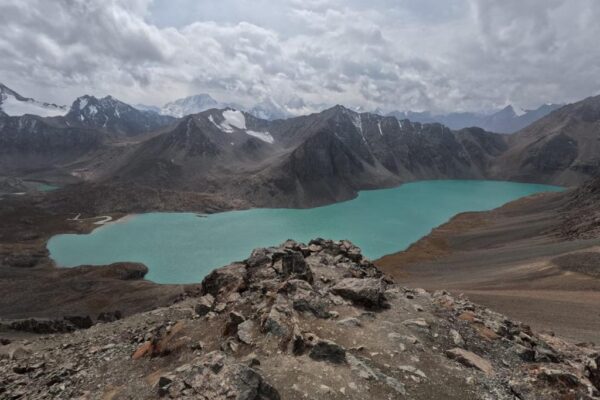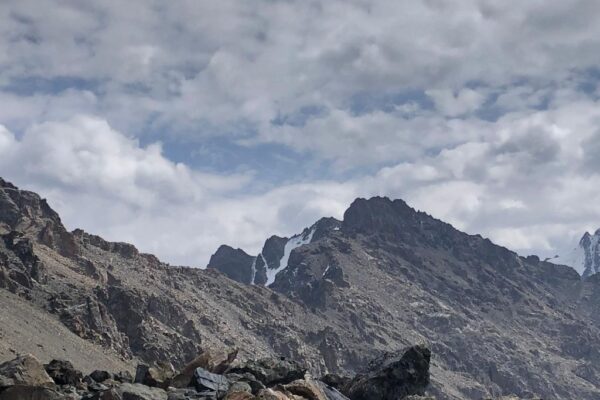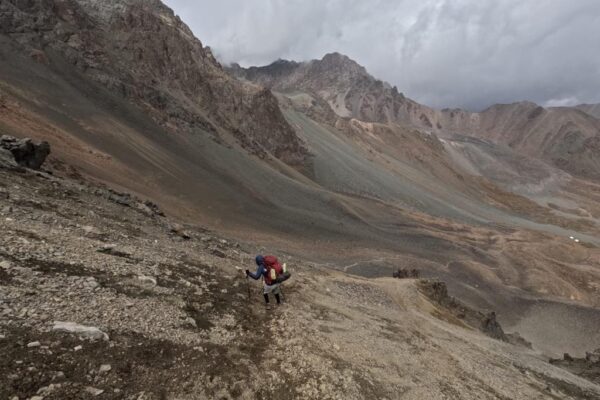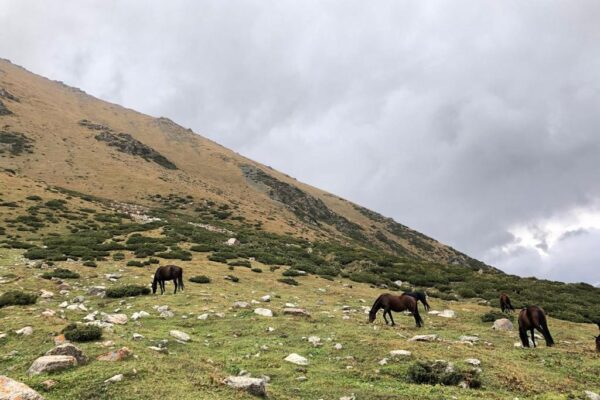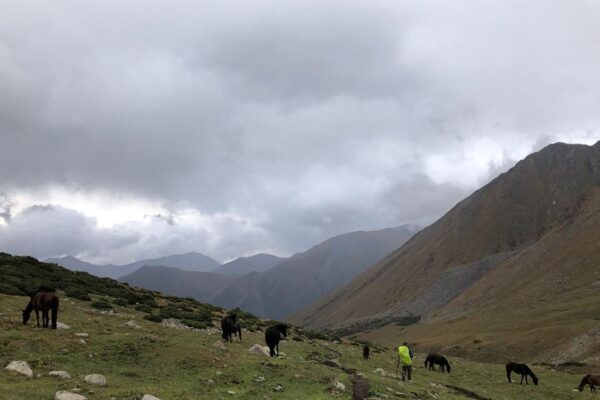This year I had the privilege of receiving a Pink Summits grant sponsored by Osprey, with which I was able to travel to Kyrgyzstan, the home country of Pink Summits founder Dastan. It was my first international solo trip, and I had little idea of what exactly was in store for me in the Central Asian region. My friends gave me their blessings as I set out with only a backpack (thanks, Osprey!) and some trekking gear. I had just moved apartments and stored away my belongings in Berlin. From there I flew to Bishkek, where I spent a couple of days adjusting to the time zone by wandering through the Grand Bazaar, eating pilaf, visiting the national history museum, learning to read some Cyrillic, and meeting fellow travelers—mainly Europeans and Russians—in the hostel where I stayed. The people at the hostel were welcoming and friendly, and I bonded with some travelers, including a fellow queer woman who was bike-packing across the country to Uzbekistan.
I quickly realized that one day in travel time felt like the equivalent of perhaps one month in the stagnant world—the friendships I made in those first few days in Bishkek, and those I would later form along the trail—felt almost immediately like strong bonds. My time at the hostel concluded, I said goodbye to the cute stray cats there, and used the basic Russian phrases I had picked up to find my way around the western bus station and locate the marshrutka to Karakol, a small town in the northeast of Issyk Kul lake about 1700 meters above sea level. The roughly seven hour-long journey on a 30-degree September day in a packed minivan was pleasantly comfortable. Though the only source of fresh air came from the driver’s seat window, which was cracked open, the temperature quickly dropped as we ascended in elevation towards the mountains. As a country that is 80% mountainous, I was eager to gain elevation and glimpse some of the snow-capped peaks I had read about prior to my trip. I was also eager to leave the bustle and dust of the capital and set out into the backcountry.
After arriving in Karakol, I had developed a bit of a headache, perhaps due to the sudden change in elevation (prior to this trip the highest altitude I’d stood was just over 2100m, on a trek in the Pyrenees). Most people traveled to Karakol to hike to the Ala Kul alpine lake, and I hoped to meet others whom I could join there. I found my hostel and had settled in for only a couple of minutes in the common area when I struck up a conversation with a Filipino traveler who had just completed the circuit with a guide. He shared tips with me and two Peruvian cousins, who then invited me to join them the following morning–I didn’t hesitate to agree to join them. We organized our gear that evening and decided to set out without a guide early the next day.
Upon entering the national park, we learned that there could be bears and wolves but none of us were equipped with bear spray—I was a bit nervous about this but two hikers we passed that morning informed us that they’d see a bear print but hadn’t come across the animals themselves, and luckily our trip was similarly uneventful in that regard. My two trekking companions had lighter packs than mine (I carried a rather heavy tent I had rented from an outfitter in Karakol, and enough food for four days) and the women were on a tight schedule since they didn’t have the luxury of taking more than a week off from work. Although it is one of the most popular hikes in the country, with yurts open for overnight stays and a hot meal throughout the national park in the summer season, the ruggedness of the mountains and the trails were no joke. I cursed the weight of my backpack on the first day after reaching camp, and it felt blissful to pitch my tent before a heavy thunderstorm began, enjoying rice and beef stew near a river offshoot on the first night. A group of hikers was cheerily eating and drinking at the campsite, and we all woke early the next morning to some welcome sun as the locals packed away the yurt there for the season. The weather was beginning to grow colder, and we learned that early-mid September marked the end of the trekking season. Our plan was to continue onto the alpine lake, at around 3500m, where we were to set up camp on day two.
The cousins with whom I began the trek were eager to continue at a faster pace, and I decided to meet them at the lake that afternoon and trek instead with two guys I had met that morning. The guys (one of whom is queer and proud of it!) and I shared an instant jovial rapport, and I knew that hiking with them would be a fun adventure. We exchanged wisecracks all along the trail that day, and by the time we reached Ala Kul lake later that afternoon, the inside jokes we had developed made it feel as if the three of us had long since been friends. Reuniting with the Peruvian cousins, we set up camp in the cold wind (only one other tent was at the campsite besides those of our group) and took in some stunning twilight views of multiple glaciers and the radiant blue of the lake water from the rocky shore. The next day, we climbed over the mountain pass around 3900m, taking in the jaw-dropping vistas once again through a bout of mild altitude sickness, and made our way down a steep path into the valley below. There, the bare wooden structures of yurts marked the eventual path to a couple of river crossings, which we navigated through some heavy rainfall and later some fairly slippery, deep mud. The trail seemed endless, but we ultimately emerged from the national park after nightfall that evening, determined to hang up our wet gear and soak our sore muscles in the blissful hot springs at Altyn Arashan and sleep in a warm yurt that night.
From rain to snow, from sleet to sun, the frequent and sudden weather changes in the mountains offered a visceral reminder not only of the impermanence of human emotions, but also of the ephemeral nature of life itself. The lessons of those weather patterns, while turbulent, offered personal solace and humbled me throughout the trek, which is a feeling I still hope to return to throughout my daily life outside of the backcountry.
The rest of the trip was marked by camping along the southern shore of Issyk Kul for a couple of days, visiting the enchanting Skazka canyon, sleeping in another remote yurt, a chance visit to an impressive rural Soviet memorial to fallen soldiers in WWII, and a wild (but safe) hitchhiking journey back to Bishkek. The local Kyrgyz were incredibly hospitable, and though my command
over the language was pitiable at best, the drivers of the last car in which I hitchhiked insisted that my travel companion and I join them in their family home for a delicious dinner of homemade manty, our plates replenished with each bite. Foreigner privilege notwithstanding, as a solo female traveler, I found Central Asia to feel safer than some cities in Europe.
Back in the capital, I caught up with Dastan and Chris, who had each flown in from Germany, and we visited the headquarters of Indigo, a Kyrgyz LGBTQI+ organization. Although their work is under threat by this year’s draconian and homophobic governmental policies, they offer critical services such as HIV and STI testing as well as a community hub for queer people in Kyrgyzstan. I was honored to share the scholarship funds from Osprey/ Pink Summits with local queer leaders, and to have the opportunity to meet community leaders affiliated with the organization to learn more about the often harsh lived realities of queer people in rural and urban Kyrgyzstan.
On my last full day in the country, I joined Pink Summits along with a vibrant group of queer Kyrgyz youth (affiliated with Indigo), on the trail for the long-awaited community event. We met at a central point in Bishkek and took a couple of vans together as a group before commencing the hike to Kol-Tor lake, a beautiful alpine lake at around 2700m above sea level in the Kegeti valley (see Dastan’s post on this day as well!). Along the trail, I felt light-footed and stronger compared to the week prior, carrying only a small day pack, and was happy to serve as the group’s caboose, communicating with Dastan via walkie-talkie as he led the front end of the group on the ascent. It was wonderful to have in-depth and lighthearted conversations with amazing queer youth and adults, some of whose leadership in the local community and clear political vision I found truly inspiring.
Overall, I am incredibly grateful for the opportunity to experience a life-changing trip to Central Asia. Between solo traveling, trekking, meeting friends along the trail, and connecting with queer youth in Kyrgyzstan, I can say with near certainty that this won’t be my last visit there.

